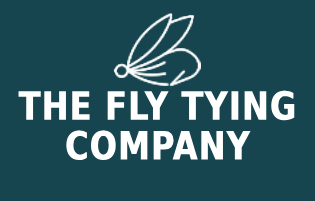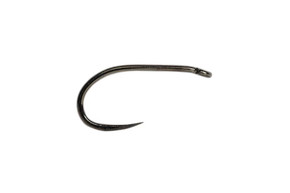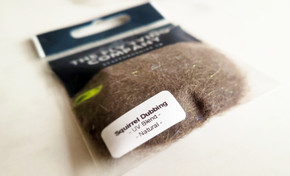Origin & History
The Black Buzzer is a classic nymph pattern, originating from Scottish stillwater fisheries in the early 20th century. It imitates pupating midges just below the water surface, making it extremely effective for trout in UK lochs and reservoirs. The pattern became popular due to its simplicity, reliability, and ability to trigger bites in low-light conditions and on buzzer-heavy days.
Materials
- Hook: 1X–2X long nymph hook, sizes 10–16
- Thread: Brown or black 8/70D
- Tail: 3–5 strands coq de leon fibres
- Body: Black or dark grey synthetic dubbing
- Rib: Optional – fine gold or copper wire
- Thorax: Black or dark grey synthetic dubbing
- Optional Wingcase: Thin black tinsel or mylar
Step-by-Step Tying
- Secure the Hook: Place the hook in the vise and secure firmly.
- Attach the Thread: Start behind the hook eye and wrap back to the bend.
- Prepare the Tail: Tie in 3–5 strands of coq de leon fibers at the bend, about the length of the hook shank.
- Form the Body: Apply black or dark grey dubbing to the thread and wrap forward to form a smooth, tapered body.
- Add Ribbing: Optional – tie in fine wire and spiral it along the body for segmentation and durability.
- Create Thorax: Apply more dubbing around the thorax area, slightly thicker than the body.
- Optional Wingcase: Tie in a strip of thin black tinsel or mylar over the thorax and secure.
- Finish: Whip finish the thread and trim any excess materials.
Variations
- Standard Black Buzzer: Classic black synthetic body with coq de leon tail.
- Grey Buzzer: Dark grey body for slightly paler water conditions.
- Ribbed Black Buzzer: Gold or copper ribbing for extra segmentation and sparkle.
- Wingcase Buzzer: Adds a black tinsel wingcase for pupal detail.
- Emerging Black Buzzer: Slightly lighter thorax to imitate pupae just before emergence.
Seasonality & What It Represents
Effective spring through autumn, especially on buzzer-heavy days. Represents midge pupae or emerging midges just below the surface film, a primary food source for trout in stillwaters.
Tackle & Setup
- Rod: 9–10 ft 4–6 weight stillwater or lake rod
- Line: Floating or intermediate line for controlled depth
- Leader: 9–12 ft tapered leader
- Tippet: 4–6 lb
- Presentation: Use a slow, drag-free drift or washing-line presentation for natural movement
Summary Table
| Feature | Details |
|---|---|
| Hook Size | 10–16, 1X–2X long nymph |
| Tail | 3–5 strands coq de leon fibers |
| Body | Black or dark grey synthetic dubbing |
| Rib | Optional fine wire |
| Thorax | Black or dark grey synthetic dubbing |
| Wingcase | Optional thin black tinsel or mylar |
| Seasonality | Spring to autumn |
| Best For | Midge pupae and emerging midges in stillwaters |












